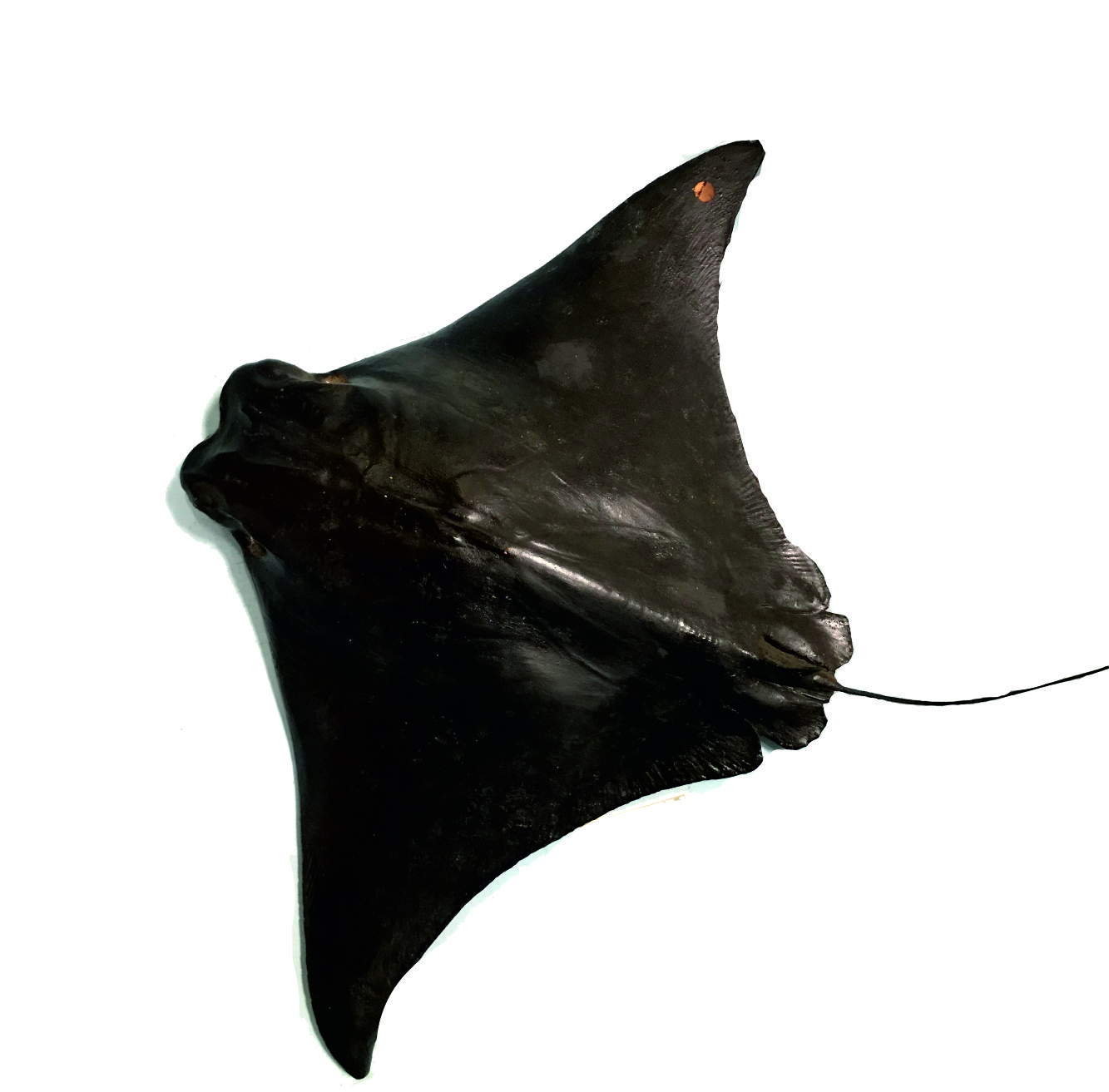
Flapnose ray
Rhinoptera javanica
| Class: | Chondrichthyes |
| Order: | Myliobatiformes |
| Family: | Myliobatidae |


Distribution and habitat
- Found in the Indo- Pacific off China, India, Indonesia, Iran, Japan, Madagascar, Malaysia, Mozambique, Pakistan, the Philippines, Seychelles, Somalia, South Africa, Sri Lanka, Taiwan, Tanzania, Thailand, Vietnam and possibly Australia.
- Its natural habitats are open seas, estuaries, and near coral reefs, over sand and mud bottoms.
- Occurs in inshore depths to 30 m.
About the fish
- It is a large cartilaginous inshore batoid ray with double-lobed snout and indented forehead.
- Its upper side is brown and underside white.
- Maximum Size: 150 cm (Disc Width); Weight – 4.5 kg
- Jaws usually have 7 rows of plate-like teeth.
- It has rounded pelvic fins and a very small dorsal fin but lacks a caudal fin all together.
- It possesses stinging spines, which can be found behind the dorsal fin, and a slender whip-like tail.
- Males court by nipping the female’s dorsum, mating pair orient in venter to venter position, and male inserts claspers.
- The female is positioned on top of the male, and mating lasts about 30 seconds – 1 minute.
- Exhibit ovoviparity, with embryos feeding initially on yolk, then receiving additional nourishment from the mother by indirect absorption of uterine fluid enriched with mucus, fat or protein through specialized structures.
- This species most likely has 1 to 2 young per litter due to the large size at birth.
- Size at birth: one late term embryo was 63 cm DW
- IUCN has listed this species as vulnerable.
- The small litter size, tendency to form large schools, its inshore and estuarine habitat and hence availability to a wide variety of inshore fishing gear, its marketability warrants a global Vulnerable assessment.
